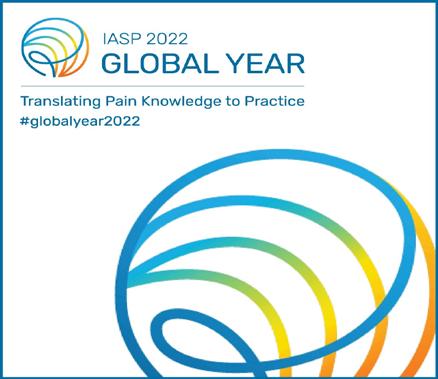
3 minute read
Impaired School Functioning in Children with Chronic Pain: A National Perspective
from APS OCT22 eNews
by auspainsoc
Journal Reference: Groenewald CB, Tham W, & Palmero TM. Impaired School Functioning in Children With Chronic Pain: A National Perspective. Clinical Journal of Pain 2020;36(9):693-699.
DOI: 10.1097/AJP.0000000000000850
Reviewer: Monica Malhotra, Senior Occupational Therapist, Children’s Pain Management Service, Department of Anaesthesia and Pain Management, Royal Children’s Hospital, Melbourne
Aims
The purpose of this study was to determine the association between presence of chronic pain and school functioning among school aged children (6-17 years) using the most recent United States national data. The study also aimed to report associations between chronic pain and multiple aspects of school functioning, including (1) child school engagement, (2) chronic absenteeism, (3) child having problems at school, (4) repeating a grade, and (5) being diagnosed with a learning disability. Exploration of whether school functioning and chronic pain differed by age and sex was also a key aim of the study.
Method
A secondary analysis of data from the 2016-2017 National Survey of Children’s Health (NSCH) was used. The NSCH is an annual cross-sectional survey, conducted via in-person interviews of randomly sampled households, selected via a multistage process to represent the entire civilian, non-institutionalized population of the United States. The primary purpose of NSCH is to provide national estimates of the health status of the United States childhood population.
For each family included in the NSCH, 1 child (17 years or younger) was selected to be the subject of the survey, while 1 parent responded to questionnaires. Parents responded to whether their child had chronic pain over the past 12 months though a questionnaire. They also reported on school functioning in terms of engagement with school, school absenteeism, problems at school, repeating a grade, and diagnosis of a learning disability.
Children with chronic pain were compared with children without chronic pain using multivariate logistic regression models. Analysis was also stratified according to age and sex. Other covariates included, child race/ethnicity, household income, insurance status, census region, parent education. Previous studies proved depressive and anxiety symptoms are directly related to school functioning children with chronic pain, and for this reason, these two variables were included in multivariate analysis.
Results
Eight percent of 48,254 parents reported their child having chronic pain in the last 12 months. Chronic pain was more common among 15-17-year-olds (as compared with younger age groups), females compared to males, and in children from lower household income levels. Race, ethnicity, and census region were not associated with chronic pain status. Chronic pain was more common among children with anxiety and depression.
Multivariate analyses revealed children with chronic pain had a nearly 90% increased odds of school reported problems, a 60% increased likelihood of having a learning disability, a 40% increased likelihood of poor school engagement and a 40% likelihood of repeating a grade at school. Anxiety was significantly associated with all school measures, while depression was associated with poor school engagement, chronic absenteeism, and school related problems.
Conclusions
The study provides further evidence that children with chronic pain had significantly worse school functioning compared with children without chronic pain, in a large, national sample. It highlights the need for continued collaborative care especially for vulnerable populations.
Reviewer’s critique & take home messages
Overall, this research article provides informative data and findings on the association between chronic pain and school functioning, using a large, national sample. Cross-sectional design can, at times, provide inaccurate and less specific data, and doesn’t allow for a casual relationship between chronic pain and school functioning to be established. It was not clear how much information was provided to the parent on what constitutes chronic pain or what symptoms to look out for to identify if their child had experienced chronic pain in the last 12 months. This could have led to under- or over-reporting, bias on answers provided, and somewhat skewed the data, given it relied on parent memory over the past 12 months. The article also acknowledges these limitations of the study.
The writer found it helpful in understanding the multivariate factors impacting chronic pain and school functioning, particularly the references to previous studies on the link between anxiety, and depression. For most clinicians working in paediatric chronic pain, it is unfortunately a common occurrence for children to present with comorbidities, and having further evidence to link between anxiety, depression, chronic pain, and school functioning, highlight the importance of utilising a multidisciplinary and collaborative approach.
This study paves the path forward for further research and investigation into the links between chronic pain and school functioning for children and adolescents, which is more than important given school is the primary occupation for most young people. The impact of loss of school functioning linked to chronic pain outcomes, may perpetuate the chronic pain cycle, and lead to poorer social determinants of health.
Ultimately, the writer finds this study to be inspiring, and agrees that chronic pain and school functioning is an area that needs to be addressed, not only at an individual level, but also by implementing population-based approaches within the wider community.
Declaration
The writer has no conflict of interest to declare in reviewing this article.




